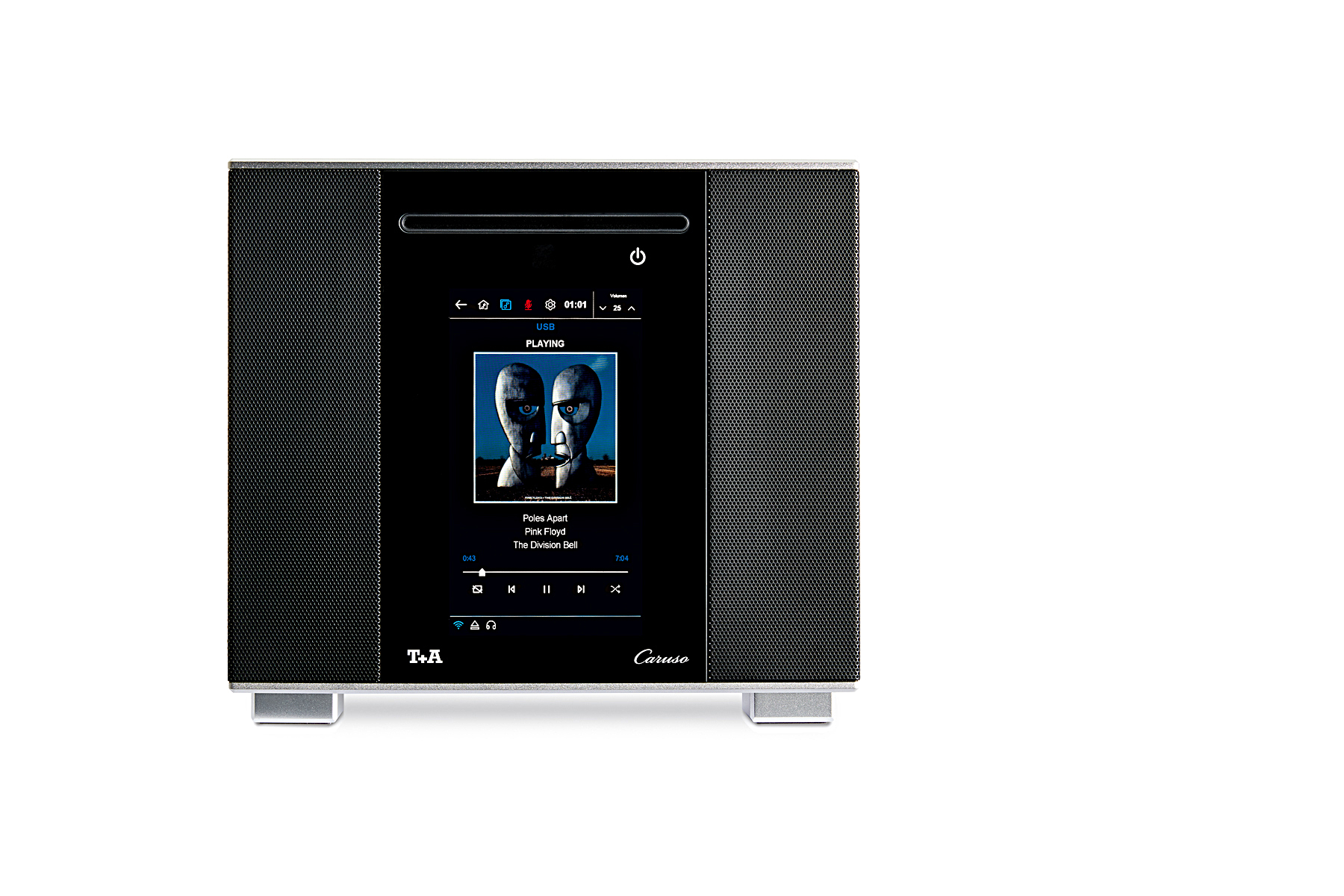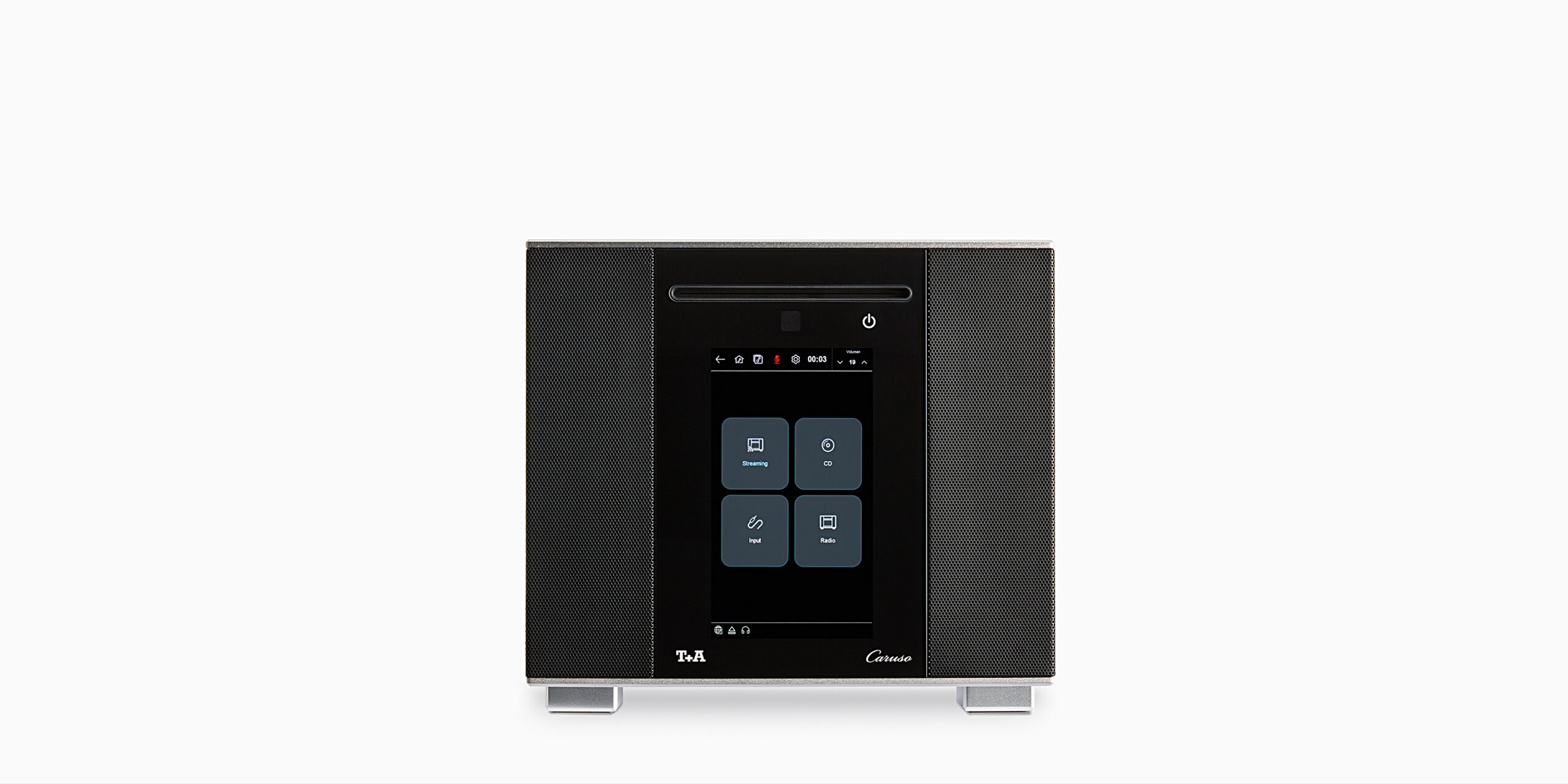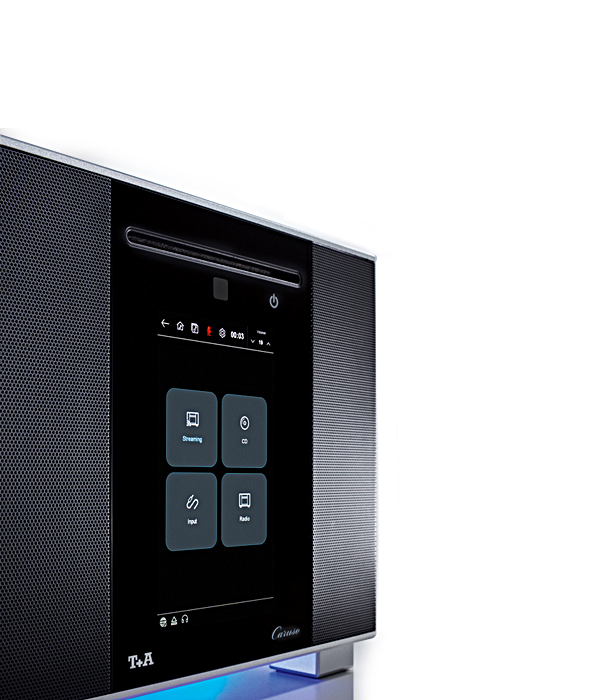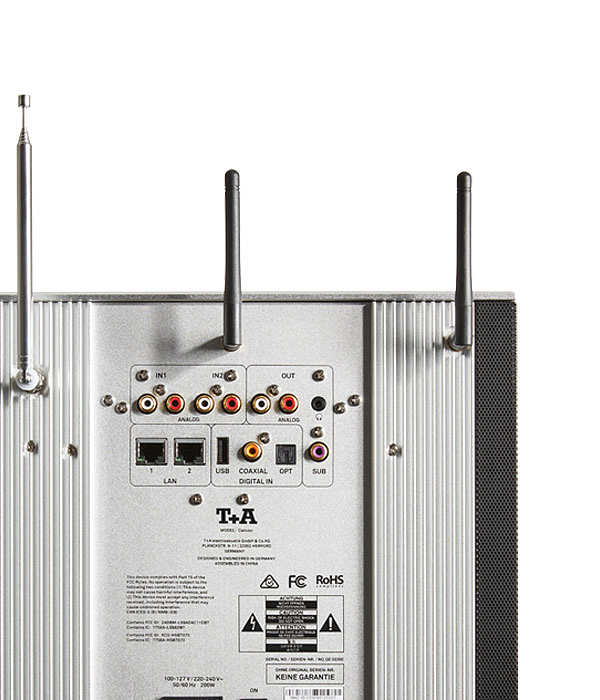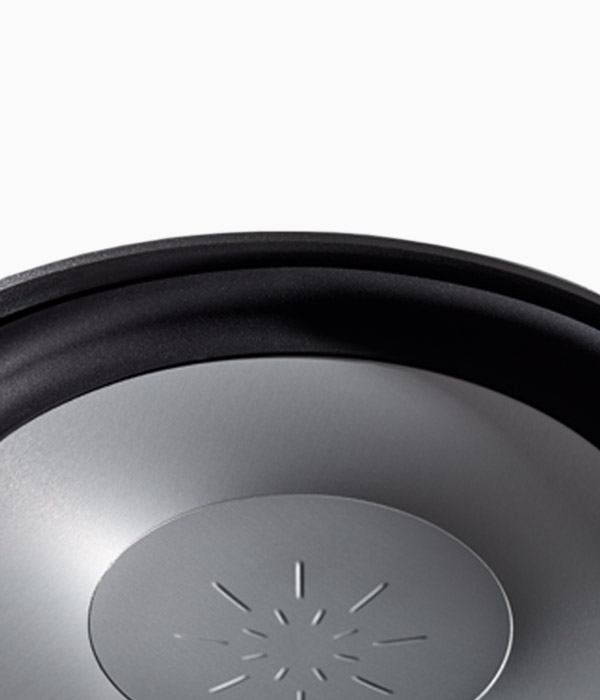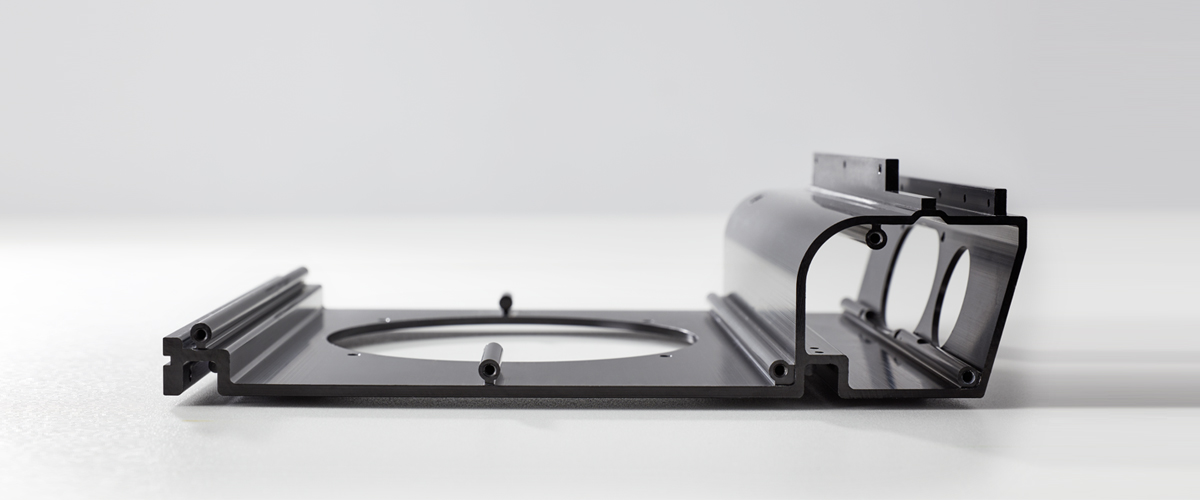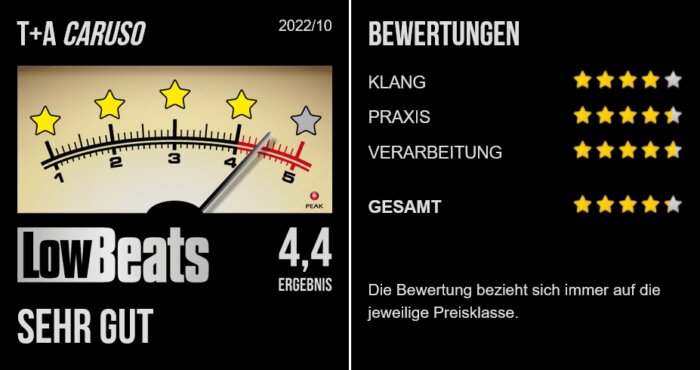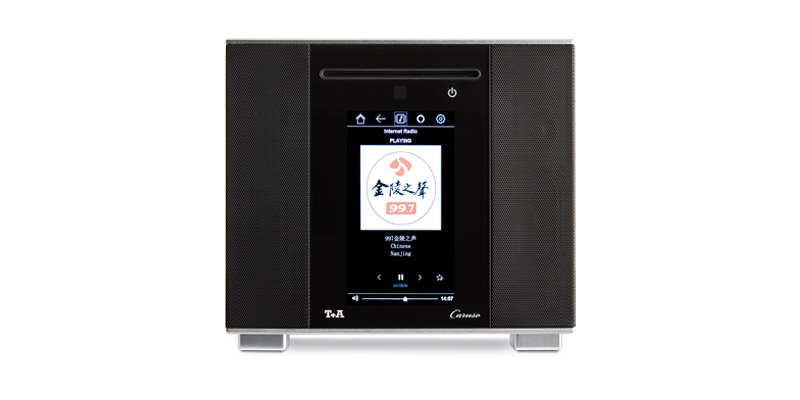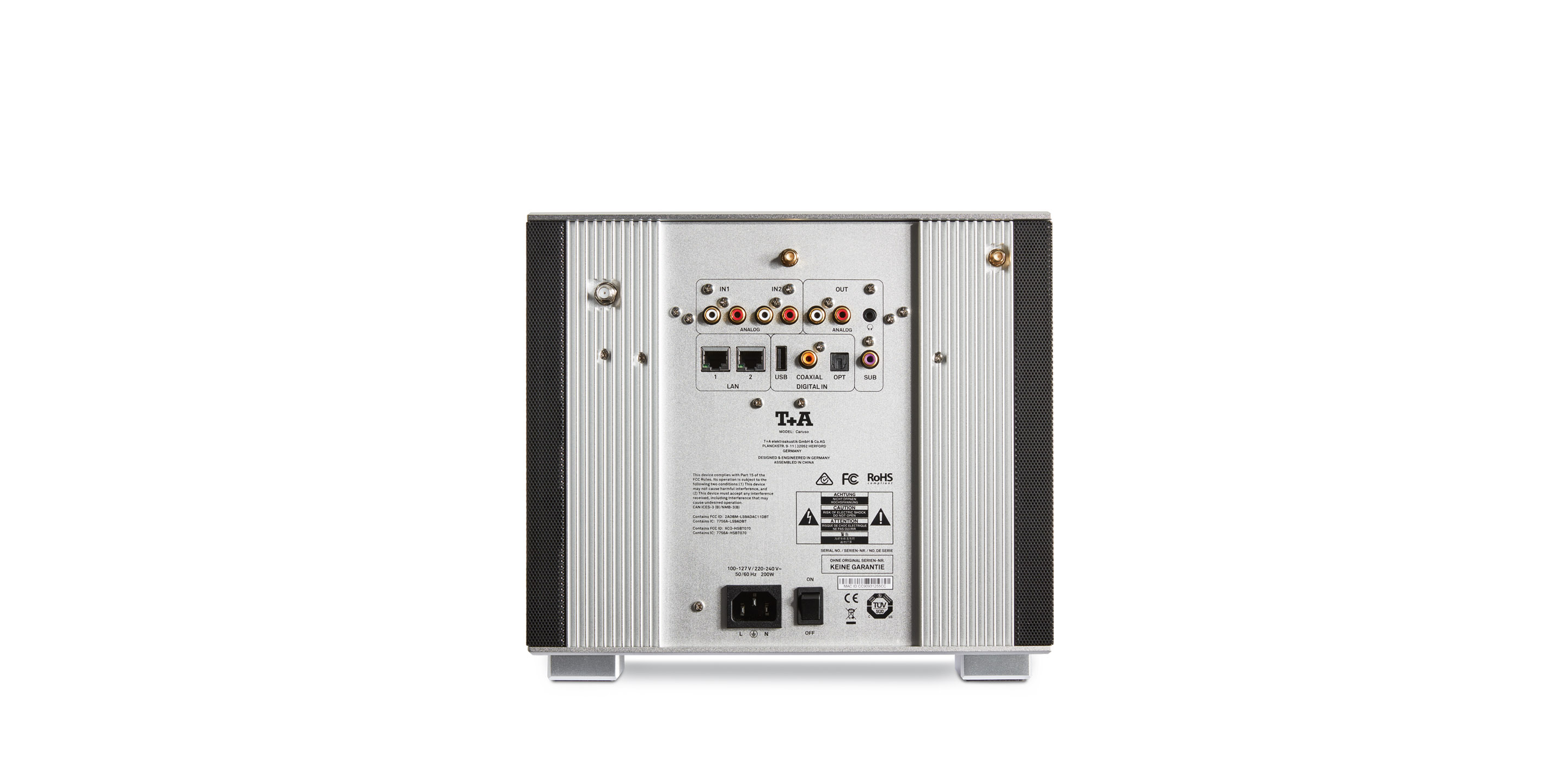The baseplate of the Caruso carries a high-performance bass driver featuring an extremely large magnet with a deep drawn pole plate and a rigid, well-damped aluminium cone and surround, permitting extremely large excursions. These features enable it to generate deep bass response at very high levels without suffering distortion. However, even this sophisticated driver would not be capable of delivering such tremendous bass from the Caruso’s small case without the support of two bass-tuned passive radiators. These are located in the left and right side panels, behind the loudspeaker grilles.
The mid / treble range of the left and right channels is handled by two sets of newly developed mid-range / treble units and dome tweeters, which are inset into the aluminium front panel of the inner case, inclined slightly to left and right. They are very linear in response, and reproduce the entire vocal and treble range from 200 Hz to more than 30 kHz with an ultra-wide dispersion angle. Each of the speaker sets is driven directly by its own power amplifier stage, i.e. they are direct-coupled, without the passive components of conventional crossover units. This active design philosophy maintains a very high damping factor, and helps to optimise the system’s peak handling and radiation characteristics; this is crucial to the Caruso’s outstanding spatial sound image. The output stages with their direct-coupled drivers are controlled by the integral DSP, which is responsible for every aspect of signal processing from linearisation to crossover frequencies, and is entirely loss-free in operation.
The weight of the Caruso is an indication of the unit’s internal ruggedness. The case is enormously rigid thanks to its newly developed T+A Aluminium Framework: a complex profiled extrusion acts as the load-bearing support for the entire internal architecture. The result is that the Caruso’s net internal volume is relatively large, which in turn contributes to its astonishing reproduction of very deep bass. Even at extremely high levels the case remains composed and resonance-free.
